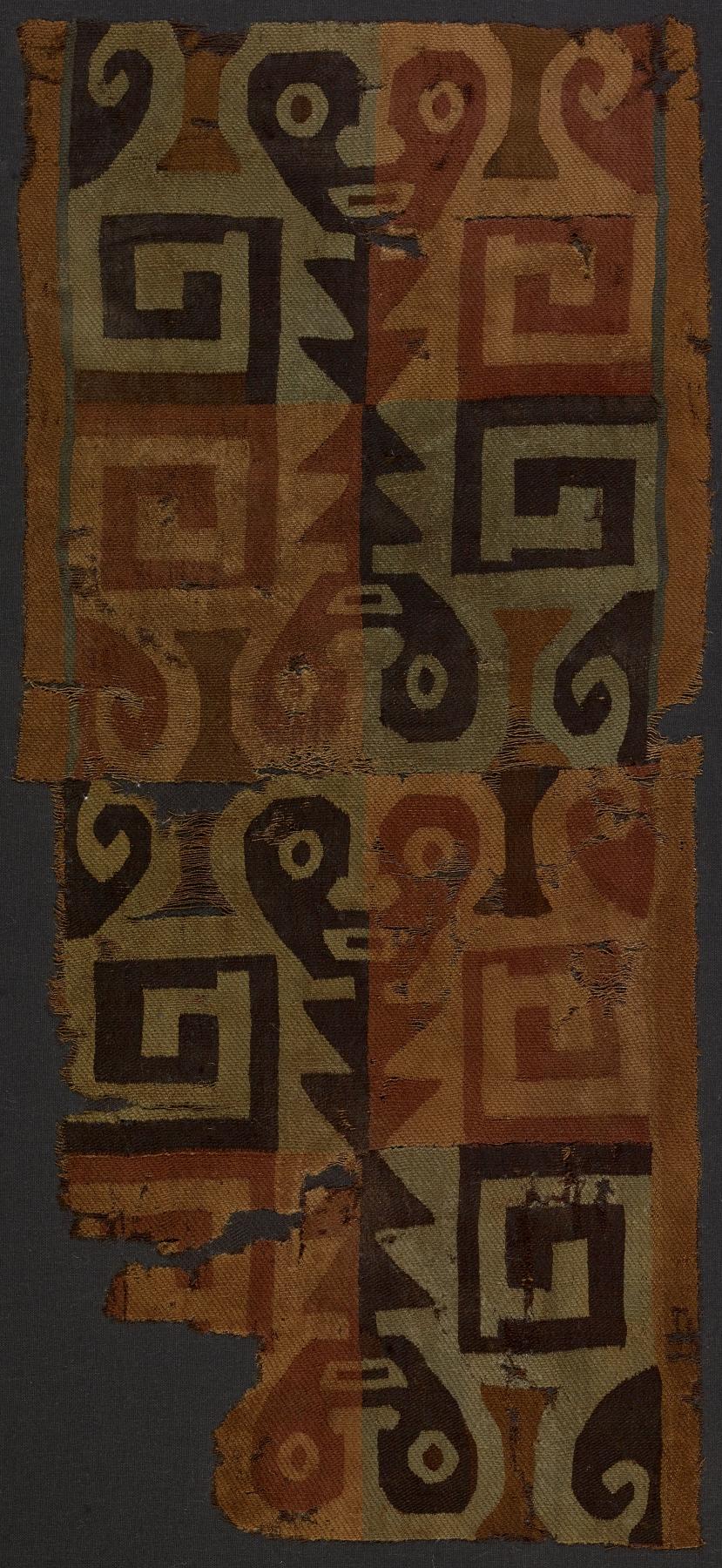Tunic or Panel Fragment
(Ancient Americas )
This Huari textile, quite likely a panel from a tunic or cushma (extra-long tunic), includes a motif frequently found in Huari art, that of a standing figure with outstretched arms, reflected by a corresponding, upside-down figure below. In keeping with the Huari love of distortion in their textiles, there is a vertical and horizontal mirroring of the colors and forms of this figure, such that the top right and bottom left quarters of each square within the textile pattern are interchangeable, simply inverted and oriented facing the other way. This type of reflection, and the use of large-scale figures, may be more characteristic of a fusion of the Huari style with Nazca influences, as the Huari empire expanded in the south coast of Peru ca. 700-1000 CE.
Provenance
Provenance (from the French provenir, 'to come from/forth') is the chronology of the ownership, custody, or location of a historical object. Learn more about provenance at the Walters.
Purchased by Georgia de Havenon, New York; given to Walters Art Museum, 2016.
Geographies
Peru, South Coast (?) (Place of Origin)
Measurements
H: 19 3/8 x W: 8 3/4 in. (49.21 x 22.23 cm)
Credit Line
Gift of Georgia and Michael de Havenon, 2016
Location in Museum
Not on view
Accession Number
In libraries, galleries, museums, and archives, an accession number is a unique identifier assigned to each object in the collection.
In libraries, galleries, museums, and archives, an accession number is a unique identifier assigned to each object in the collection.
2011.20.2




